Trip Overview
The Annapurna Circuit Kosher Trek spans five districts in Nepal: Lamjung, Manang, Mustang, Myagdi, and Kaski. This trek, which typically takes around 20 days to complete, offers a diverse and breathtaking journey through some of Nepal’s most stunning landscapes. The Annapurna Circuit Kosher Trek features dramatic altitude changes, from below 1,000 meters to 5,416 meters, traversing through fertile farmlands and arid, snowy terrains.
Beginning in the picturesque rice fields of the lowlands, the trek ascends to the Thorong-La Pass at 5,416 meters, one of the highest trekking passes in the world. The route follows the gorges of the Marshyangdi River before turning westward into the arid lands of Mustang, all while offering magnificent views of the Annapurna Himalayas to the north. The Annapurna Circuit Kosher Trek kicks off with a scenic 9-hour drive from Kathmandu to Dharapani along the Prithvi Highway, where travelers are treated to glimpses of the Annapurna II, Lamjung Himal, and Machhapuchhre mountains.
The Annapurna Circuit Kosher Trek passes through charming villages inhabited by a rich diversity of ethnic groups, including Gurung, Thakali, Magar, Brahmins, among others, providing a cultural as well as a natural feast for the senses. A highlight of the trek is Poon Hill, a popular vantage point for sunrise. From its view tower, trekkers can witness the breathtaking panorama of the Dhaulagiri and Annapurna ranges.
The Annapurna Circuit Kosher Trek concludes in Pokhara, a beautiful city renowned for its serene lakes and stunning mountain views. A day of sightseeing in Pokhara includes visits to various museums, caves, and temples, providing a perfect end to this unforgettable adventure.
Trip Facts
Trip Itinerary Expand All
Monday: Arrival in Kathmandu
Arrive in Kathmandu, Nepal’s vibrant capital. Transfer to your hotel for rest and acclimatization. Explore the bustling Thamel district or visit nearby attractions if time permits.
Tuesday: Drive to Dharapani via Beshishar
Embark on a scenic 9-hour drive from Kathmandu to Dharapani via Beshishar along the Prithvi Highway. Enjoy views of lush landscapes, terraced fields, and Himalayan peaks like Annapurna II, Lamjung Himal, and Machhapuchhre.
Wednesday: Trek to Chame
Begin your trek from Dharapani to Chame (2,710m). The trail follows the Marshyangdi River and passes through forests, villages, and terraced fields. Enjoy the changing scenery and the first views of Annapurna II and Lamjung Himal.
Thursday: Trek to Pisang
Continue trekking from Chame to Pisang (3,300m). The path ascends through forests and pastures, with stunning views of the Annapurna range. Pisang offers a blend of traditional architecture and awe-inspiring mountain vistas.
Friday: Trek to Manang
Trek from Pisang to Manang (3,519m). The trail offers panoramic views of the Annapurna range, including Annapurna III and Gangapurna. Pass through the Tibetan-style village of Braga before reaching Manang, where you’ll notice a distinct change in landscape and culture.
Saturday Sabbath: Manang REST
Spend a rest day in Manang to acclimatize. Explore the village, visit the local monastery, or hike to nearby viewpoints. Enjoy a relaxed day absorbing the culture and stunning mountain views.
Sunday: Trek to Yak Kharka
Resume trekking from Manang to Yak Kharka (4,110m). The trail ascends gradually, offering views of alpine landscapes and snow-capped peaks. Pass through juniper forests and meadows.
Monday: Trek to Phedi
Trek from Yak Kharka to Thorong Phedi (4,450m). The path becomes more challenging as you gain altitude. Thorong Phedi is the last stop before crossing the Thorong La Pass.
Tuesday: Trek to Muktinath via Thorong La Pass
Start early for the challenging trek to Muktinath (3,800m) via the Thorong La Pass (5,416m). This is the highest point of the trek, offering breathtaking views. Descend into the Mustang region and reach the sacred pilgrimage site of Muktinath.
Wednesday: Drive to to Tatopani
Drive from Muktinath to Tatopani (1,200m). The trail descends significantly, passing through the Kali Gandaki Gorge and offering views of Dhaulagiri and Nilgiri. Enjoy the hot springs in Tatopani.
Thursday: Trek to Shika
Continue trekking from Tatopani to Shika (1,935m). The trail ascends gradually, offering scenic views of the surrounding mountains and valleys.
Friday: Trek to Ghorepani
Trek from Shika to Ghorepani (2,850m). The path takes you through rhododendron forests and picturesque villages. Ghorepani is a popular stop for trekkers heading to Poon Hill.
Saturday - Sabbath: Rest at Ghorepani *
Enjoy a rest day in Ghorepani. Take it easy and prepare for the early morning hike to Poon Hill the next day. Explore the village and interact with fellow trekkers.
Sunday: Trek to Ulleri
Early morning hike to Poon Hill (3,210m) for a stunning sunrise view over the Dhaulagiri and Annapurna ranges. Afterward, trek down to Ulleri (2,070m).
Monday: Drive to Pokhara
Take a drive from Ulleri to Pokhara (827m). Enjoy the relaxing journey and the transition from the mountains to the lakeside city. Transfer to your hotel in Pokhara.
Tuesday: Sightseeing in Pokhara
Spend the day sightseeing in Pokhara. Visit the International Mountain Museum, Davis Falls, Gupteshwor Cave, and various temples. Enjoy the serene environment of Phewa Lake and the stunning mountain backdrop.
Wednesday: Drive back to Kathmandu *
Drive back to Kathmandu. The journey takes approximately 6-7 hours. Transfer to your hotel for your final night in Nepal. Spend the evening exploring or shopping for souvenirs.
Thursday: Trip Ends
Your Annapurna Circuit Kosher Trek concludes. Transfer to the airport for your departure flight, or continue your adventures in Nepal.
Itinerary Informations
To accommodate Sabbath observance, our Annapurna Circuit Kosher Trek starts on a Tuesday from Kathmandu. This ensures that rest days align perfectly with the Sabbath, allowing for a peaceful and reflective environment.
This Kosher trek to Annapurna Circuit Trek is a unique adventure designed for Jewish travelers who wish to maintain their religious and dietary practices while experiencing one of the world’s most iconic trekking routes. Key features include:
- Kosher Meals: Enjoy nutritious meals prepared with certified Kosher ingredients, ensuring strict adherence to dietary laws.
- Sabbath Observance: The itinerary includes designated rest days to honor the Sabbath, providing a peaceful and reflective environment.
- Prayer Services: Daily prayers and group services are organized, fostering a sense of community and shared spirituality.
- Health and Safety: Expert guidance on acclimatization, nutrition, and maintaining energy levels at high altitudes is provided.
- Natural Beauty: Trek through breathtaking Himalayan landscapes, including majestic peaks, serene valleys, and vibrant flora.
- Spiritual Enrichment: Opportunities for meditation and reflection enhance the spiritual journey, allowing trekkers to connect deeply with their faith and the natural surroundings.
What Includes & Excludes
Includes
Accommodation
- Two Nights hotel accommodation in Kathmandu in a Standard Hotel in BB plan
- Two nights hotel accommodation in Pokhara in BB Plan
Meals
- Breakfast is In Kathmandu Hotel
- All three meals (Breakfast, Lunch and Dinner) as per Kosher Standard
Guides and Porters
- An English speaking local guide
- Trekking Porters - We Assign a porter for each two trekkers.
Transports
- All ground transportation as per itinerary
- From and to the airport transfer to the hotel on a private tourist vehicle on your International arrival and departure.
Additional Services
- All government taxes and official expenses.
- Farewell dinner one night before the client’s final departure in a typical Nepali Restaurant with culture dance. Your guide will accompany you.
- Trekking/tour permits, entrance fees.
- Accommodation, foods, insurance, salary, equipment, and medicine for field staffs.
Excludes
- Anything not mentioned in the price includes.
- Personal trekking gears/equipment.
- Tips for trekking staff (Tipping is expected).
- Lunch and dinner in the city.
- All drinks including bottled/boiled water along the trekking route
- Visa fees and travel insurance.
- International airfare to and from Nepal.
Join the Departure
Guest Reviews
We highly recommend Broad Adventures they provided exceptional guidance on our Everest Base Camp trek. Our guide’s Gynau’s professionalism,...
Read More...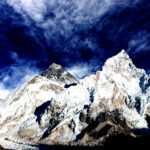
David Neufeld
CanadaIf you are looking for a tour to see the Mt Everest base camp look no further. I have...
Read More...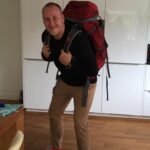
Tim Troost
AustraliaI was looking at an exotic trek adventure. After looking for a bunch of places to go I thought...
Read More...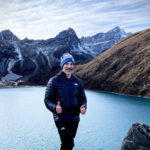
Keith B.
USAKeshab was our most gracious and amiable guide in Kathmandu and to Everest basecamp. My wife accompanied me on...
Read More...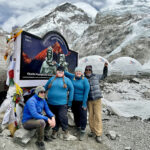
Ken Byers , Nevada
USAMy son and I went for trekking in Nepal in 2009, and we were lucky to have Keshab Khanal...
Read More...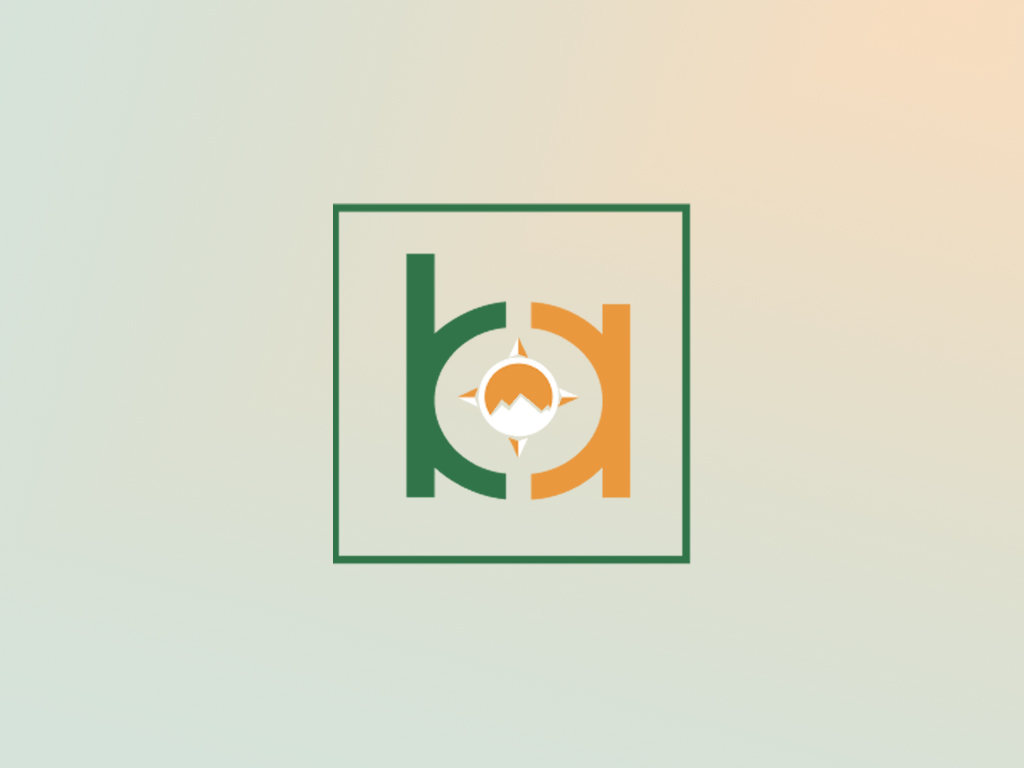
Dr. Raphael Hemmendinger
Jerusalem , IsraelIn 2005 I came to Nepal for the second time, this time whith a very specific queste. I wanted...
Read More...
Richard Rijken
Amsterdam , NetherlandsI was always willing to go to the Himalayas and explore some of the beauties hidden in the sacred...
Read More...
John Peter
Manchester , United KingdomNamaste! This was my first time to Nepal, and I had an amazing time on my trek. From the...
Read More...
David Patrician
Hamburg , GermanyI was on trekking from 24.10.10 to 5.11.10 in the half part of Annapurna circuit from Bhulbhule to Jomsom....
Read More...
Vaya Bairaba
Athens , GreeceImportant Info
Ultimate Information: Annapurna Circuit Kosher Trek
Geography and Districts
- Districts Covered:
- Lamjung: Initial part of the trek with lush greenery and terraced rice fields.
- Manang: Known for its arid landscapes and Tibetan-style villages.
- Mustang: Features stark, barren landscapes and deep cultural heritage.
- Myagdi: Home to Poon Hill and diverse flora and fauna.
- Kaski: Concludes in the beautiful city of Pokhara.
Altitude
- Starting Altitude: Below 1,000 meters (lowlands)
- Highest Point: Thorong-La Pass at 5,416 meters
- Significance: One of the highest trekking passes in the world, offering breathtaking views.
Key Landmarks and Highlights
- Starting Point: Kathmandu to Dharapani
- Travel Route: A scenic 9-hour drive along the Prithvi Highway.
- Notable Views: Annapurna II, Lamjung Himal, Machhapuchhre mountains.
- Major Pass: Thorong-La Pass
- Elevation: 5,416 meters
- Challenges: High altitude, thin air, and extreme weather conditions.
- Popular Viewpoints:
- Poon Hill:
- Elevation: 3,210 meters
- Significance: Famous for sunrise views of the Dhaulagiri and Annapurna ranges.
- Poon Hill:
- Ending Point: Pokhara
- Attractions: Serene lakes, stunning mountain views, museums, caves, and temples.
Scenery and Landscapes
- Initial Terrain:
- Lowlands: Fertile rice fields and lush greenery.
- Mid-Trek:
- Marshyangdi River Gorges: Deep gorges and river valleys.
- Later Terrain:
- Mustang: Arid, desert-like landscapes with dramatic geological formations.
- Snowy Regions: Higher altitudes covered in snow and ice.
- Final Terrain:
- Pokhara: Tranquil lakes and lush greenery.
Ethnic and Cultural Diversity
- Ethnic Groups:
- Gurung: Known for their hospitality and rich cultural traditions.
- Thakali: Renowned for their cuisine and trade history.
- Magar: Indigenous group with a strong cultural heritage.
- Brahmins: Integral part of the Hindu culture in Nepal.
- Village Experience:
- Cultural Interactions: Opportunities to engage with local traditions, festivals, and daily life.
Key Activities
- Trekking:
- Diverse Landscapes: From lush lowlands to high-altitude passes.
- Altitude Variation: Significant changes from below 1,000 meters to 5,416 meters.
- Sightseeing in Pokhara:
- Museums: Learning about local history and culture.
- Caves: Exploring natural formations and sacred sites.
- Temples: Visiting religious and cultural landmarks.
Major Viewpoints
- Poon Hill:
- Elevation: 3,210 meters
- Experience: Sunrise views with panoramic vistas of the Dhaulagiri and Annapurna ranges.
- Throughout the Trek:
- Annapurna II: 7,937 meters
- Lamjung Himal: 6,983 meters
- Machhapuchhre (Fishtail Mountain): 6,993 meters
- Dhaulagiri Range: Over 8,000 meters
Transportation
- Initial Travel:
- From Kathmandu: 9-hour drive to Dharapani.
- Route: Prithvi Highway with scenic landscapes and mountain views.
Cultural Experiences
- Village Interactions:
- Local Traditions: Experiencing the lifestyle, customs, and festivals of different ethnic groups.
- Cultural Feasts: Sampling local cuisines and participating in traditional activities.
- Sightseeing in Pokhara:
- Museums: Understanding the historical and cultural context of the region.
- Caves: Visiting natural and historical sites.
- Temples: Exploring religious and cultural significance.
Get Trip PDF file
Why travel with
Broad Adventures
Since 2010, we have curated unique itineraries that offer once-in-a-lifetime experiences, ensuring every trip is filled with joy and adventure. Our focus on the fun factor and the right amount of challenge allows you to achieve a profound sense of personal accomplishment, all while enjoying the camaraderie of like-minded travelers.
Small-Group Adventures
Join an intimate group of like-minded travelers who share your passion for discovering the world's wonders safely and confidently. Our small group settings foster a deeper connection with your fellow explorers and the incredible destinations we visit.
Expert Local Guides
We exclusively employ local guides and porters for their unparalleled knowledge and expertise. Their insights and firsthand experiences enrich your journey, giving you a deeper understanding and appreciation of the local culture, history, and environment.
Responsible for Tourism
Your safety is our utmost priority. Our dedicated team of trained professionals ensures the highest standards of care, including providing fresh and hygienic meals, comprehensive First Aid supplies, and round-the-clock communication services. We are committed to responsible tourism practices, emphasizing the importance of sustainable and ethical travel.
Health and Saftey
Promoting responsible tourism is essential, as it calls for a collective effort from everyone involved in the industry. By prioritizing health and safety, we ensure that each journey is not only enjoyable but also respectful of the destinations and communities we visit.
How can we help you?
- City Tour Equipment
- City Tour Season
- Climbing Equipment
- Climbing Season
- General Questions
- Guide and Staffs
- Nepal Overview
- Tipping
- Transportations
- Trekking Equipment
- Trekking Season
- VISA info
- Weather and Temperature
Do you provide any equipment for the trek?
Broad Adventure provides you a basic equipment like a Sleeping Bag and a down Jacket, for the tea-house trek. And for the climbing trip, we provide the basic equipment. For a camping trek check it once including the section.
What is the time zone of Nepal?
NPT (UTC+05:45)
What cultural attractions can I explore in Kathmandu?
Kathmandu is home to historical sites like Durbar Square, Swayambhunath (Monkey Temple), and Pashupatinath Temple. These landmarks showcase Nepal’s rich cultural and religious heritage, providing visitors with a deep insight into the country’s history.
What are the must-visit cities in Nepal?
Kathmandu, Pokhara, Bhaktapur, and Patan are popular cities offering rich cultural experiences. Each city has its own unique charm, historical sites, and vibrant local markets.
Do you provide any equipment for the trek?
Broad Adventure provides you a basic equipment like a Sleeping Bag and a down Jacket, for the tea-house trek. And for the climbing trip, we provide the basic equipment. For a camping trek check it once including the section.
Do I need to tip the guide and porters? What is the standard tip?
Tips is expected by your team members and normally the standard is 10% of your total trip cost.
What is the climbing season in Nepal?
The main climbing seasons are spring (April to May) and autumn (September to November). During these times, the weather is more stable, providing safer and more favorable conditions for climbing expeditions.
Are there other mountains in Nepal suitable for climbing?
Yes, Nepal is home to numerous trekking peaks and mountains suitable for climbing, such as Island Peak, Mera Peak, and Lobuche East. These peaks offer a challenging yet rewarding experience for climbers of various skill levels.
Can I climb Mount Everest as a tourist?
Climbing Mount Everest requires significant preparation, experience, and permits. Most climbers join organized expeditions with experienced guides. Climbing Everest is a serious undertaking that demands physical fitness, technical skills, and a high level of commitment.
Do I need to tip the guide and porters? What is the standard tip?
Tips is expected by your team members and normally the standard is 10% of your total trip cost.
What is the voltage and plug type used in Nepal?
The standard voltage is 230V, and the plug type is the Europlug (Type C) and the British-style plug (Type D). It’s advisable to bring adapters if necessary.
What is the voltage and plug type used in Nepal?
The standard voltage is 230V, and the plug type is the Europlug (Type C) and the British-style plug (Type D). It’s advisable to bring adapters if necessary.
Is it necessary to get travel insurance for Nepal?
Yes, travel insurance is highly recommended, especially for trekking and adventure activities. Ensure that your insurance covers medical emergencies, evacuation, and trip cancellations.
What languages are spoken in Nepal?
The official language is Nepali, but English is widely understood in tourist areas. Additionally, various ethnic groups have their own languages.
What is the currency used in Nepal, and are credit cards widely accepted?
The official currency is the Nepalese Rupee (NPR). While major cities and tourist areas accept credit cards, it’s advisable to carry cash in remote areas. ATMs are available in urban centers.
How can I get around within cities in Nepal?
Transportation options include taxis, rickshaws, and local buses. Walking is also a great way to explore the cities, especially in the old quarters. Many cities have well-preserved historic areas, and navigating them on foot allows for a more immersive experience.
What cultural attractions can I explore in Kathmandu?
Kathmandu is home to historical sites like Durbar Square, Swayambhunath (Monkey Temple), and Pashupatinath Temple. These landmarks showcase Nepal’s rich cultural and religious heritage, providing visitors with a deep insight into the country’s history.
Can I climb Mount Everest as a tourist?
Climbing Mount Everest requires significant preparation, experience, and permits. Most climbers join organized expeditions with experienced guides. Climbing Everest is a serious undertaking that demands physical fitness, technical skills, and a high level of commitment.
Are permits required for trekking in Nepal?
Yes, trekking permits are required for most trekking regions. The type of permit depends on the specific trekking area. It’s important to obtain the necessary permits from the respective authorities to support local conservation and management efforts.
When is the best season for treks in Nepal?
From March to mid-June and September to December is the best season for treks.
What is the fitness required for the treks?
Generally, to trek in Nepal we should have good physical and health conditions. And also able to walk 4- 7 hours in day at a high altitude with your little backpack.
Do you pick me up at the Airport upon my arrival?
Yes, our airport representative welcomes you at the airport and transfers you to the hotel in a private tourist vehicle.
Does my guide/porter speak English?
They speak English. All the guides are professional and due to their professionalism, they speak good English. The guide’s English is enough to explain the local culture, activities, and religions.
Are the treks and tours secured? What about the security?
Providing security to our clients is our principal. The government-licensed holder guides and other crew members are carefully assigned for your trip. Even though, would like to counsel you to take care of your equipment, and bags. If you doing a tea-house trek your accommodation is in a local guesthouse, where you have to be a precaution yourself at all times. And if you are on a camping trek always keep your bags inside the tent and while at nighttime please keep your bag in the middle of the tent. The camping leader assigns a Sherpa as a guard throughout the nighttime.
What sort of ground transportation do you use?
Normally we assign a car for up to 2 people and a Jeep for up to 5 people and then a bus for up to 14 PAX and Coster and Sutlej Bus depending on group size. There are some trekking routes, which are dirt roads for them we assign 4WD Jeeps. It also depends on what services you opt for.
Are the staff insured by your company?
Yes, all of the staff and crew members are insured.
Should I need to join the group?
Joining a group depends on your booking and the option that you choose. If you have booked for Private Trip then obviously you will not join. Otherwise, normally the same trip departs on the same day then the group will join.
Do you arrange a private trip?
Yes, of course, we will arrange a private tour.
How big is a group size?
We will try to arrange a small group of willing people, which immortalize the treks. Normally we encompass 12 -16 people in a group. (This is not to apply to those who want to do a Private Trip, no minimum and maximum for them.)
Is the drinking water okay? Or do I need to use tablets?
For drinking water you can buy bottled water and purified mineral water on tea-house treks and city tours. And in the camping trek, the camping cook provides you with boiled water. For some cases of remote area trekking it would be better to have some purification tablets that you can buy in Kathmandu.
What are the accommodations and meals like?
All the meals that you provided are hygienic and fresh. While you are on a camping trek you get meals prepared by a professional camping cook. And if you are doing a tea-house trek you will get the main course as like in the cities. For accommodation on the camping trek, you will have a tent with good-quality mattresses and a sleeping bag. And if you are on a tea-house trek you will normal twin-sharing room with basic facilities with a warm mattress and blanket, and also we provide a sleeping bag if you need it.
Is the shower facility during the tour/trek?
Yes, you can have a shower during the trek. In the camping trek, you will get a shower in a shower tent which is provided 3-4 times in the whole trek, depending on the duration of the trek. And in a tea-house trek, we will provide you attached room where possible and for the rest of town, you will pay for a shower.
Do you provide any equipment for the trek?
Broad Adventure provides you a basic equipment like a Sleeping Bag and a down Jacket, for the tea-house trek. And for the climbing trip, we provide the basic equipment. For a camping trek check it once including the section.
Is there any possibility of communicating in my hometown?
Yes, you can. In the Everest and Annapurna regions, you can connect via Phone, or Internet both available in most of the town and, in some remote routes, you may need to use a satellite phone that is carried by your trek guide or also get in the local town.
Can I charge the batteries of cameras, and phones?
Yes, you can charge your devices, but recommended you bring your plugs, and chargers and also do not leave unattended anything while charging in a lobby or somewhere in the trekking guesthouse. And if you are on a camping trek it’s quite hard to charge the phone so we advise you to bring a portable charge.
Are there any health precautions I should take before traveling to Nepal?
Vaccinations for diseases like typhoid, hepatitis, and tetanus are advisable. Altitude sickness prevention measures should be considered for high-altitude treks.
How can I find a reliable trekking guide in Nepal?
Reliable guides can be found through licensed trekking agencies, recommendations from fellow travelers, or by checking with the Nepal Tourism Board. Ensure that your guide has the necessary permits and is experienced in the chosen trekking region
Is hiring a local guide recommended for exploring Nepal?
Yes, hiring a local guide is highly recommended, especially for trekking and exploring remote areas. Guides provide valuable insights into the culture, history, and geography of the region, ensuring a safer and more enriching experience.
Is hiring a local guide recommended for exploring Nepal?
Yes, hiring a local guide is highly recommended, especially for trekking and exploring remote areas. Guides provide valuable insights into the culture, history, and geography of the region, ensuring a safer and more enriching experience.
Is Nepal a safe country for tourists?
Yes, Nepal is considered safe for tourists. However, like any travel destination, it’s essential to follow common-sense safety practices and stay updated on travel advisories. Local people are welcoming, and the country values its reputation as a safe and friendly destination.
What is the best time to visit Nepal?
The best time to visit Nepal is during the spring (March to May) and autumn (September to November) seasons when the weather is generally favorable for outdoor activities. During these periods, the skies are clear, and the temperatures are moderate.
What makes Nepal a popular tourist destination?
Nepal is renowned for its stunning Himalayan landscapes, rich cultural heritage, diverse wildlife, and warm hospitality. The country offers a unique blend of adventure, spirituality, and natural beauty.
What is the standard tip?
Tipping is subjective so it depends on your satisfaction. However, the standard is about 20% of the trip cost you can share with the staff.
Do I need to tip the guide and porters? What is the standard tip?
Tips is expected by your team members and normally the standard is 10% of your total trip cost.
Do you provide any equipment for the trek?
Broad Adventure provides you a basic equipment like a Sleeping Bag and a down Jacket, for the tea-house trek. And for the climbing trip, we provide the basic equipment. For a camping trek check it once including the section.
Are permits required for trekking in Nepal?
Yes, trekking permits are required for most trekking regions. The type of permit depends on the specific trekking area. It’s important to obtain the necessary permits from the respective authorities to support local conservation and management efforts.
Do I need a guide for trekking in Nepal?
While it’s not mandatory, hiring a local guide is highly recommended for safety, navigation, and cultural insights. Guides are familiar with the terrain, can provide valuable information about the region, and ensure a smoother trekking experience.
What are the most popular trekking destinations in Nepal?
The Everest Base Camp trek, Annapurna Circuit, Langtang Valley trek, and Manaslu Circuit are among the most popular trekking routes in Nepal. Each trek offers unique experiences, from breathtaking mountain views to encounters with diverse cultures.
When is the best season for treks in Nepal?
From March to mid-June and September to December is the best season for treks.
Do I need to tip the guide and porters? What is the standard tip?
Tips is expected by your team members and normally the standard is 10% of your total trip cost.
Can I extend my tourist visa to Nepal?
Yes, tourist visas can be extended at the Department of Immigration in Kathmandu or the Immigration Office in Pokhara. Extension fees and requirements vary, and it’s advisable to initiate the process a few days before the current visa expires.
What documents are required for a tourist visa on arrival?
Passport with at least six months validity, a completed visa application form (available at the airport), and two passport-sized photos are required. Additionally, visa fees must be paid in cash (USD or equivalent).
What are the types of visas available for tourists?
Tourist visas are available for duration ranging from 15 to 90 days. Extensions can be obtained within Nepal if needed. Other visa categories include business visas, student visas, and diplomatic visas, each with specific requirements.
How do I obtain a visa for Nepal?
Tourist visas for Nepal can be obtained upon arrival at Tribhuvan International Airport in Kathmandu or at various land entry points. Alternatively, you can apply for a visa at the Nepalese embassy or consulate in your home country before traveling.
What is the monsoon season in Nepal?
The monsoon season in Nepal runs from June to early September. During this time, the country receives heavy rainfall, particularly in the southern plains and the hilly regions. The monsoon brings lush green landscapes but can also cause landslides and flooding in some areas.
What is the time zone of Nepal?
NPT (UTC+05:45)

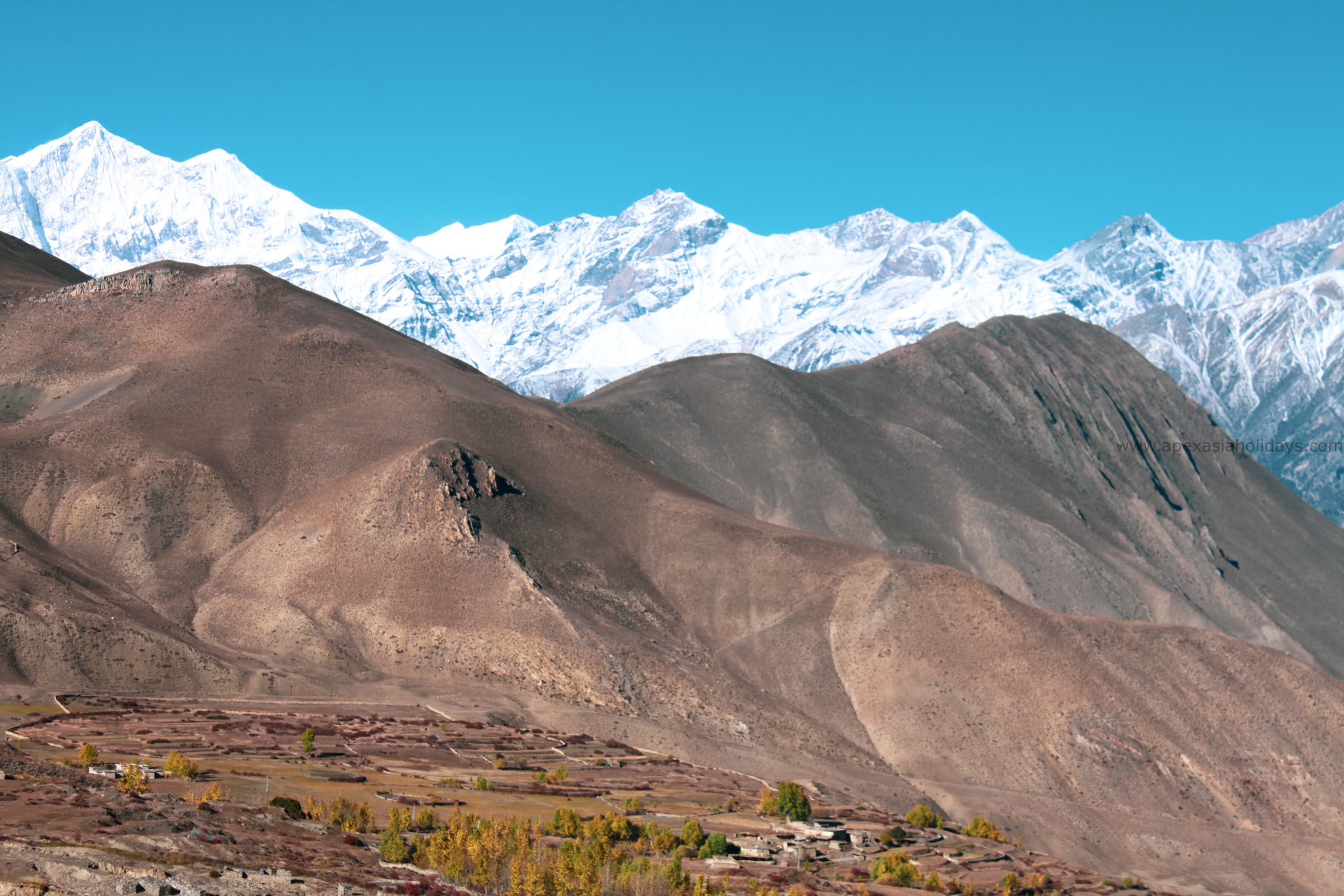
 Group Size: 2 PAX Mimimum
Group Size: 2 PAX Mimimum  Duration: 18 Days
Duration: 18 Days  Trip Start: Kathmandu
Trip Start: Kathmandu  Trip End: Kathmandu
Trip End: Kathmandu  Trip Grading: Challenging
Trip Grading: Challenging 



